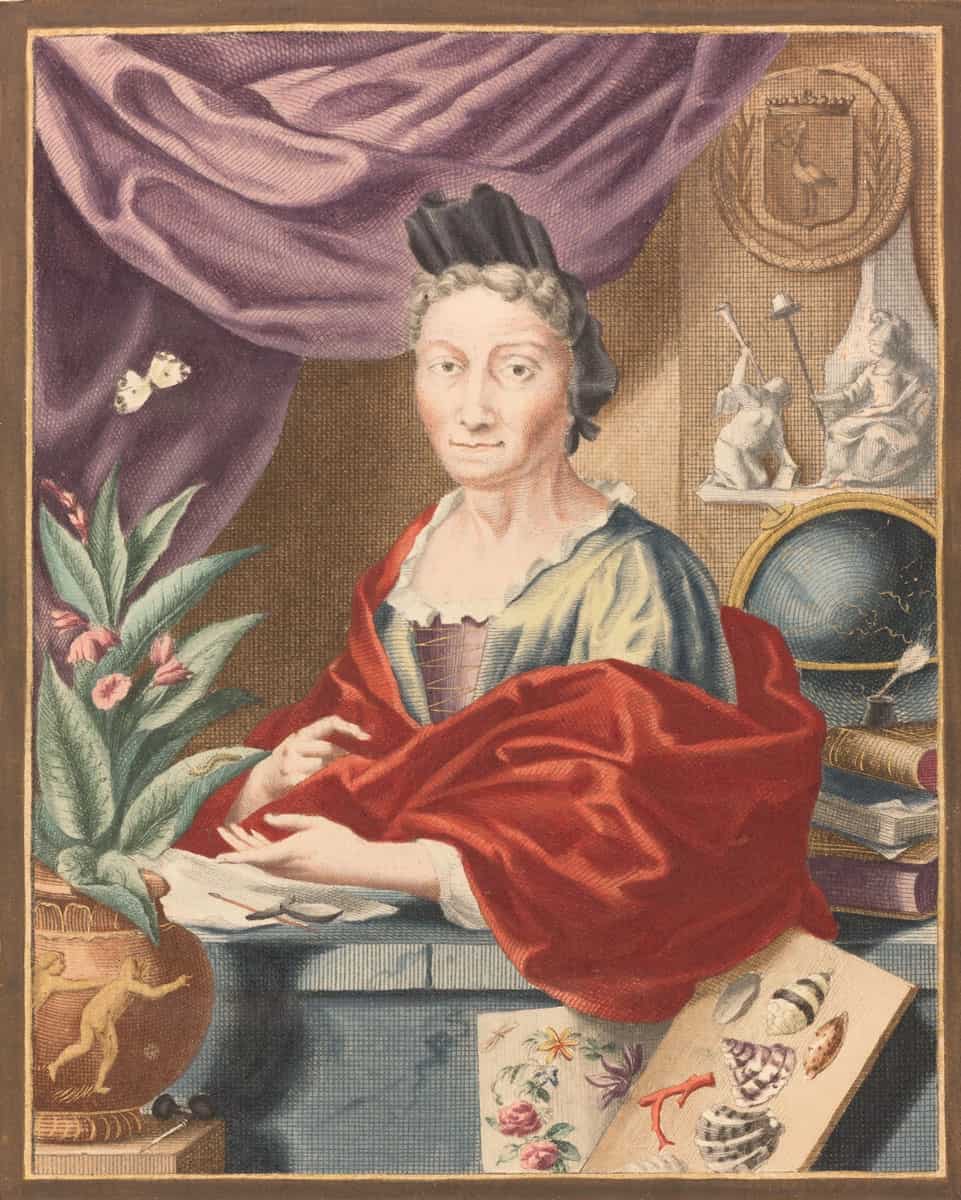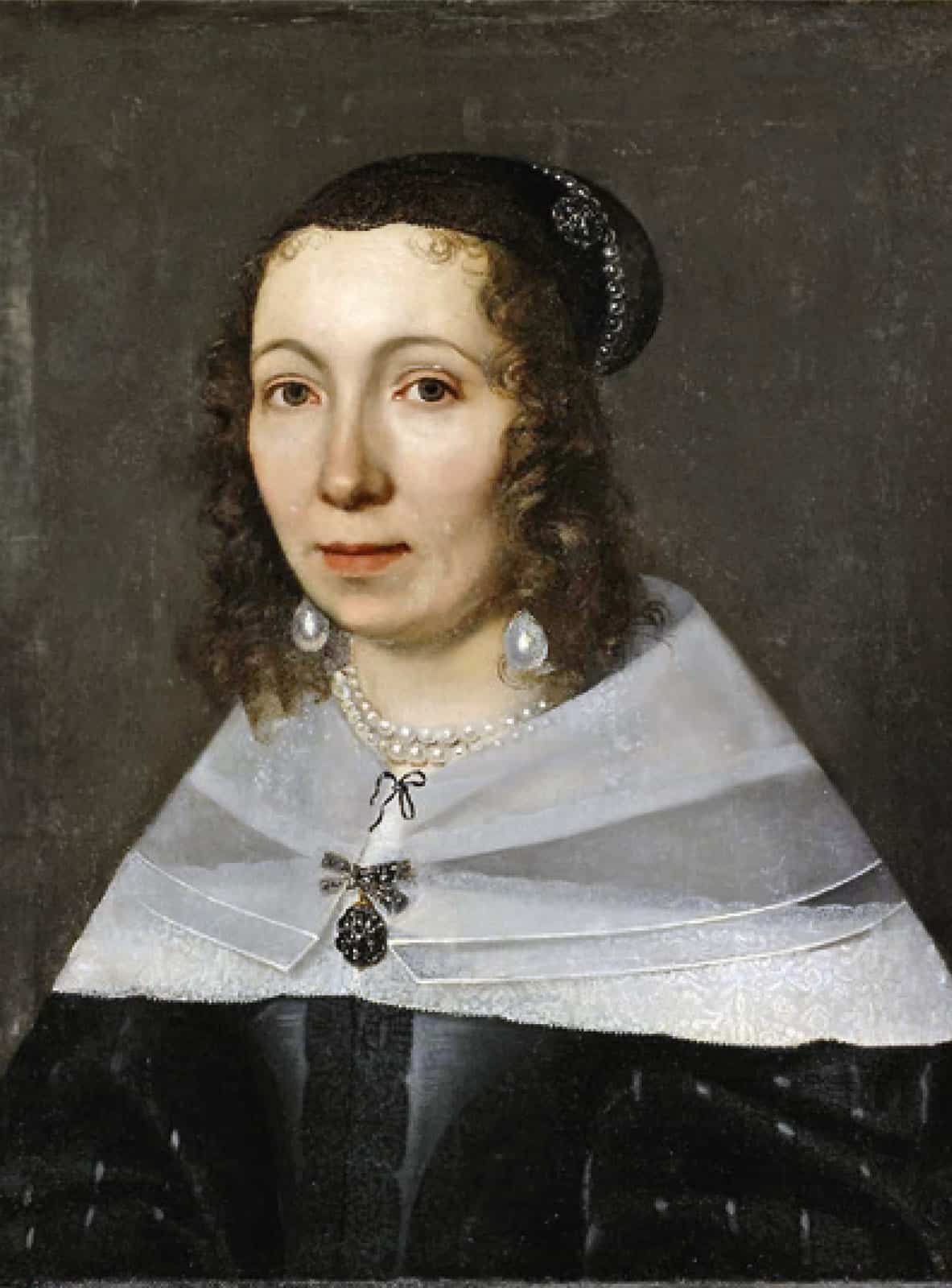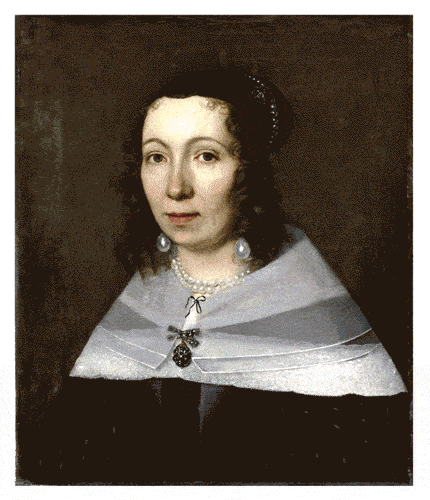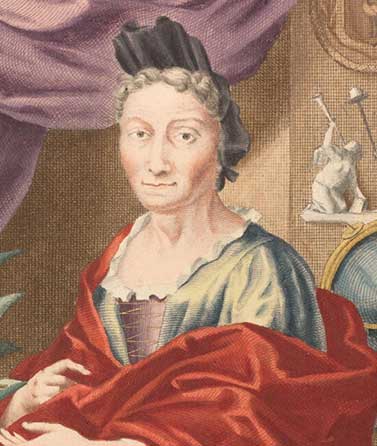TWO AUTHENTIC DEPICTIONS OF MARIA SIBYLLA MERIAN
For centuries, the most famous portrait of Maria Sibylla Merian was a copperplate etching on one of the first pages of the Dutch edition of all three Caterpillar Books published in 1717. (1) Surrounded by diverse objects which reflect her work and travels, she gazes earnestly back at the observer.
The coloured (= illuminated) etching from the Artis Library in Amsterdam appears less harsh because it was coloured on a counterprint. On a copy like this, made on on a second sheet of paper still wet from the printing press, the lines are thinner than on the direct print. After watercolour painting, a transfer like this can often hardly be distinguished from a drawing.
This copper print of M. S. Merian in old age is here juxtaposed with a small oil portrait (59 x 50.5 cm) in The Fine Arts Museum, Basel. A long time ago, a remarkable inscription was added on the reverse: MARIA SIBYLA MERIAN AET SVAE 32. ANNO 1679 (no longer visible, since the canvas was stabilized by a wooden panel in 1935). (2)
The serious, alert eyes of a woman no longer in the first flush of youth, who looks straight at the viewer, are definitely right for her. The subdued colour of her clothing was worn in Nuremberg as well as in the Reformed Netherlands, in particular by women from immigrant, religious-refugee families. Other portraits (3) show that seemingly expensive jewellery was not considered unsuitable. It was often cheap "fashion jewellery" with pearls made of glass and dipped into a metal alloy.
From autumn 1678 onwards, the head of the family, Jacob Marrell, who had taught both Maria Sibylla and Johann Andreas and was an important father figure to both, resided with the Graffs for an extended period.
On 5 November 1678, Nuremberg Council approved a special application: Jacob Marrell was permitted “to reside with his step-son-in-law, Johann Andreas Graff resident here …”. (4) The application made by his son-in-law implies the guest intended to stay for a long period of time. At that time Maria Sibylla was indeed 32 years old and probably still breastfeeding her little daughter.
The results of the search for traces in the Nuremberg Council minutes together with the inscription on the reverse of the canvas support the assumption that Marrell painted this portrait.
Nevertheless, the inscription on the back of the painting must have been added later. In Nuremberg, Maria Sibylla was always and unambiguously called “Gräffin”, at most with the addition of “née Merianin” or “daughter of the late Matthæus Merian the Elder“. (5)
She only took her maiden name of Merian as her sole surname again after her time in Nuremberg and the final separation from Graff. However, here, too, any possible doubts fade as to whether the lady in the picture really is M. S. Merian: the painting was later retouched (cf. details in the sub-chapter "Invisible Portraits"). It is quite plausible that the inscription also dates from that later time. Comparing this portrait with her portrait as an old lady on the hand-coloured counterproof in Amsterdam), it is astonishing how similar the shape of her head and her facial features are, despite the fact that at least thirty-five years had passed between the two portraits. This all supports the conclusion that the image of the younger lady is also an authentic portrait of Frau Merian.






